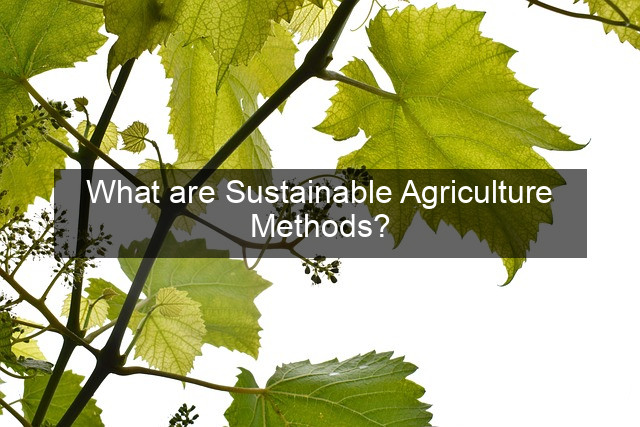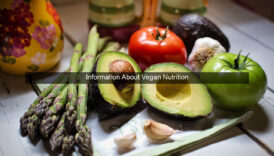What are Sustainable Agriculture Methods?

- What are Sustainable Agriculture Methods?
- What are Sustainable Agriculture Methods?
- Soil Health Management
- Cover Cropping and Green Manuring
- No-Till Farming
- Composting and Vermicomposting
- Water Management
- Efficient Irrigation Techniques
- Rainwater Harvesting
- Drought-Resistant Crops
- Integrated Pest Management (IPM)
- Biological Control
- Crop Rotation
- Cultural Practices
- Livestock Management
- Rotational Grazing
- Manure Management
- Sustainable Feed Production
- Conclusion
- Frequently Asked Questions (FAQs)

What are Sustainable Agriculture Methods?
Our planet faces an unprecedented challenge: feeding a burgeoning global population while simultaneously safeguarding our environment. This delicate balancing act necessitates a shift away from conventional, resource-intensive farming practices towards sustainable agriculture methods. These methods prioritize long-term ecological balance, economic viability, and social equity. They offer a pathway to producing nutritious food without depleting natural resources, polluting our ecosystems, or compromising the ability of future generations to meet their own needs. Sustainable agriculture isn’t a single, monolithic approach; rather, it encompasses a diverse array of techniques and philosophies, each tailored to specific contexts and challenges. From reducing reliance on synthetic inputs to promoting biodiversity, sustainable agriculture represents a crucial step towards a more resilient and equitable food system.
Soil Health Management
Cover Cropping and Green Manuring
Cover cropping involves planting non-cash crops, such as legumes and grasses, to improve soil health. These crops prevent erosion, suppress weeds, and enhance soil fertility by adding organic matter. Green manuring, a specific type of cover cropping, involves incorporating these crops back into the soil to boost nutrient levels.
Cover crops play a vital role in protecting and enriching the soil. They act as a living mulch, shielding the soil from the damaging effects of wind and rain, thereby preventing erosion and runoff. Furthermore, cover crops improve soil structure, increasing its water-holding capacity and promoting aeration, which is crucial for healthy root development.
The benefits of green manuring extend beyond simply adding nutrients. The decomposition of incorporated cover crops releases a slow, steady stream of nutrients that are readily available to plants. This improves overall soil fertility and reduces the need for synthetic fertilizers, which can have detrimental environmental impacts.
No-Till Farming
No-till farming minimizes soil disturbance by eliminating plowing. This practice preserves soil structure, reduces erosion, and sequesters carbon in the soil, mitigating climate change.
By leaving the soil undisturbed, no-till farming fosters a healthy soil ecosystem teeming with beneficial microbes and earthworms. These organisms play a crucial role in nutrient cycling and overall soil health.
No-till also helps to conserve soil moisture, making it a particularly valuable practice in arid and semi-arid regions. The reduced need for tillage also translates to lower fuel consumption and labor costs, making it an economically attractive option for farmers.
Composting and Vermicomposting
Composting and vermicomposting involve the decomposition of organic matter, such as crop residues and animal manure, into nutrient-rich compost. This valuable soil amendment improves soil structure, enhances water retention, and provides essential nutrients for plant growth.
Composting harnesses the power of natural decomposition processes to transform organic waste into a valuable resource. It reduces the need for synthetic fertilizers and helps to close the nutrient loop on the farm.
Vermicomposting, which utilizes earthworms to break down organic matter, produces a particularly rich and readily available form of compost known as vermicast. This “worm castings” is highly prized for its ability to stimulate plant growth and improve soil health.
Water Management
Efficient Irrigation Techniques
Efficient irrigation techniques, such as drip irrigation and micro-sprinklers, deliver water directly to the plant roots, minimizing water waste and maximizing crop yields.
These targeted irrigation methods reduce water consumption compared to traditional flood irrigation, which can lead to significant water loss through evaporation and runoff. They also help to prevent the spread of soilborne diseases by keeping the foliage dry.
Efficient irrigation contributes to sustainable agriculture by conserving precious water resources and improving the overall water-use efficiency of farming operations.
Rainwater Harvesting
Rainwater harvesting involves collecting and storing rainwater for later use in irrigation. This practice reduces reliance on groundwater and surface water sources, promoting water conservation.
Rainwater harvesting is a simple yet effective way to supplement irrigation water supplies, particularly in regions with limited water resources. It can also reduce the risk of flooding and erosion by capturing rainwater before it runs off.
By utilizing rainwater, farmers can reduce their dependence on municipal water supplies and minimize the environmental impacts associated with water extraction and transportation.
Drought-Resistant Crops
Cultivating drought-resistant crop varieties reduces the need for frequent irrigation, making it a valuable strategy for sustainable agriculture in water-scarce regions.
These crops are specifically bred or selected for their ability to thrive in dry conditions, reducing the vulnerability of agricultural systems to drought and climate change.
By choosing drought-resistant varieties, farmers can maintain productivity while conserving water resources and minimizing the environmental impacts of irrigation.
Integrated Pest Management (IPM)
Biological Control
Biological control involves introducing natural enemies of pests, such as predators or parasites, to regulate pest populations.
This eco-friendly approach minimizes the need for synthetic pesticides, which can have harmful effects on human health and the environment.
By harnessing the power of natural ecological processes, biological control offers a sustainable and effective way to manage pest populations.
Crop Rotation
Crop rotation involves planting different crops in sequence to disrupt pest lifecycles and reduce pest pressure.
This practice also improves soil health and reduces the need for synthetic fertilizers and pesticides.
Crop rotation is a cornerstone of sustainable agriculture, promoting both ecological and economic benefits.
Cultural Practices
Cultural practices, such as adjusting planting times and using resistant varieties, can help prevent pest infestations and reduce the need for chemical interventions.
These preventative measures are an essential component of IPM, minimizing the reliance on pesticides and promoting a more holistic approach to pest management.
By implementing cultural practices, farmers can create a less hospitable environment for pests, reducing the risk of infestations and promoting healthy crop growth.
Livestock Management
Rotational Grazing
Rotational grazing involves moving livestock between different paddocks to allow for pasture recovery and prevent overgrazing. This practice improves pasture health, reduces erosion, and enhances livestock productivity.
By mimicking the natural grazing patterns of wild herbivores, rotational grazing promotes a more balanced and sustainable ecosystem. It allows for the regeneration of plant communities and prevents the degradation of pastureland.
Rotational grazing also benefits livestock health by providing access to diverse forage and reducing the risk of parasite infestations.
Manure Management
Proper manure management, including composting and anaerobic digestion, reduces greenhouse gas emissions and minimizes water pollution. It also transforms animal waste into a valuable resource that can be used as fertilizer.
Effective manure management is crucial for mitigating the environmental impacts of livestock production. By composting or digesting manure, farmers can reduce greenhouse gas emissions, prevent water contamination, and create a valuable soil amendment.
Proper manure management contributes to a more circular and sustainable agricultural system by closing the nutrient loop and reducing reliance on synthetic fertilizers.
Sustainable Feed Production
Sustainable feed production involves minimizing the use of resource-intensive inputs, such as soy and corn, and exploring alternative feed sources, such as insect-based proteins and algae. This reduces the environmental footprint of livestock production and promotes a more resilient food system.
By diversifying feed sources and reducing reliance on conventional feed crops, farmers can reduce the environmental impacts associated with feed production, including deforestation, water pollution, and greenhouse gas emissions.
Sustainable feed production is an essential component of sustainable agriculture, promoting both environmental and economic benefits.
Conclusion
Sustainable agriculture is not merely a set of practices; it’s a paradigm shift towards a more harmonious relationship between agriculture and the environment. It’s about recognizing the interconnectedness of natural systems and working within their boundaries to produce food in a way that is both ecologically sound and economically viable. By embracing sustainable agriculture methods, we can build more resilient farming systems, enhance food security, and protect our planet for future generations. The transition to sustainable agriculture requires a collaborative effort involving farmers, researchers, policymakers, and consumers. By working together, we can create a food system that nourishes both people and the planet.
Embracing sustainable agriculture isn’t simply an option; it’s a necessity. The challenges facing our planet demand a fundamental shift in how we produce food. By adopting sustainable practices, we can create a more resilient and equitable food system that benefits both present and future generations. The journey towards sustainability is ongoing, but the potential rewards are immense. By investing in sustainable agriculture, we are investing in a healthier planet and a more secure future.
Frequently Asked Questions (FAQs)
- What is the difference between organic farming and sustainable agriculture?
- How can consumers support sustainable agriculture?
- What




